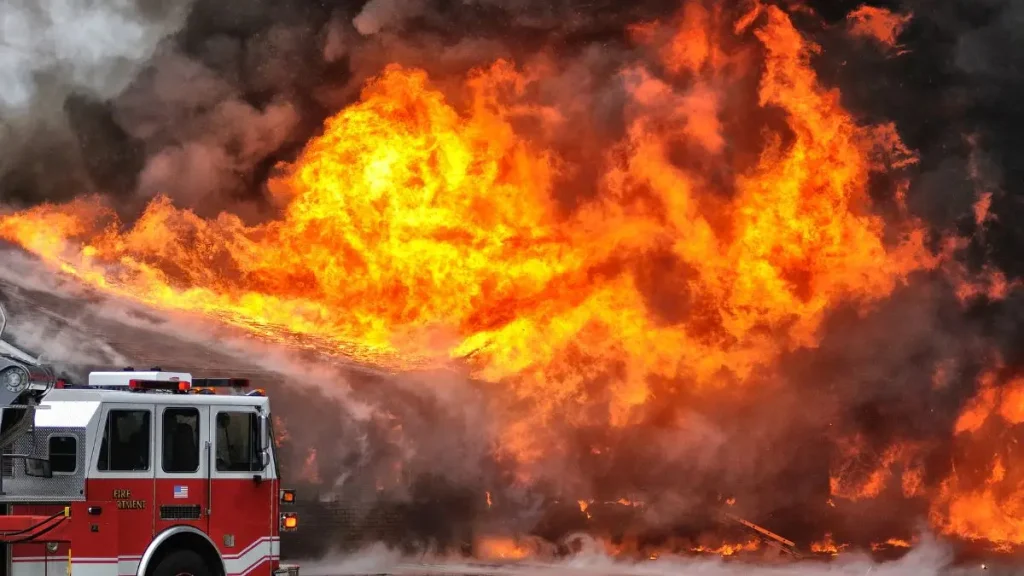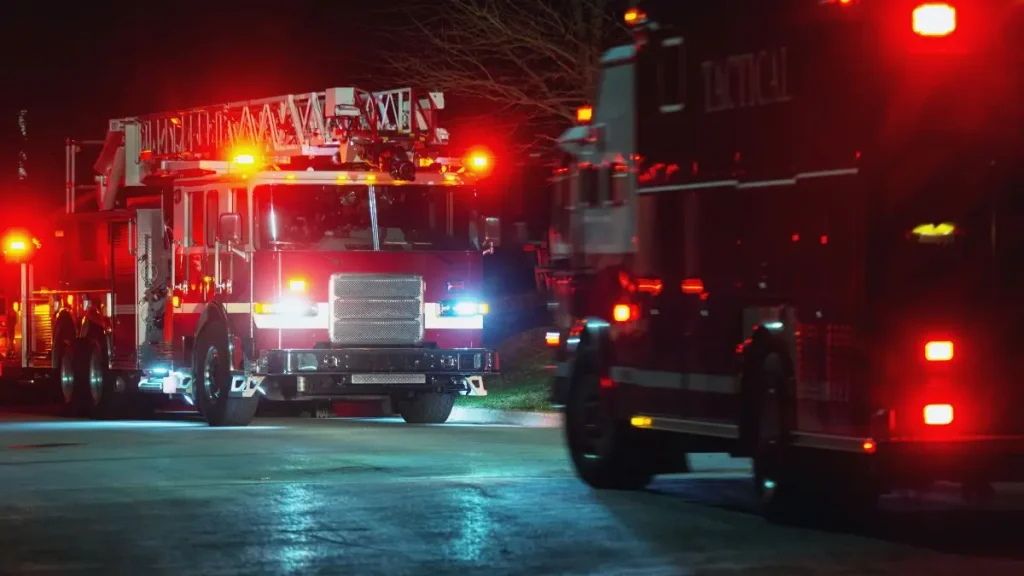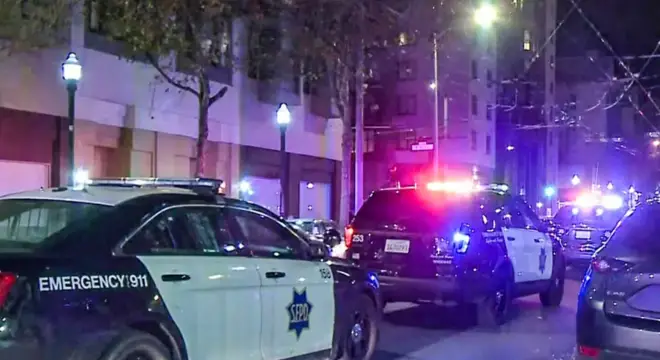New Jersey Home Engulfed in Flames — Firefighters Work to Contain Hot Spots
It started with a boom—loud enough that neighbors ran to their windows thinking something had exploded. But what followed wasn’t just noise. By the time firefighters arrived on the quiet 200 block of Burning Tree Court in Mays Landing, the house was already swallowed in flames.
I’ve covered enough home fires to know that words like “devastating” or “massive” get thrown around often. But this one? This was personal. The woman who lived there lost everything. She told reporters she was physically okay—thankfully—but her home, her belongings, her sense of safety? Gone in a matter of minutes.
What’s even more haunting is how fast it happened. One second, she was outside enjoying the day. The next, a neighbor was rushing to make sure she got far enough away from the heat and smoke.
There’s a reason this incident shook the neighborhood. Mays Landing isn’t the kind of place where you expect something like this. People there used the same word again and again: quiet. And on a quiet street, the sound of a boom hits harder. You don’t just hear it—you feel it.
What would you do if a fire like this broke out on your street? Let me know in the comments—especially if you’ve ever witnessed something similar or have tips on how neighbors can stay prepared.
What Happened: Timeline of the South Jersey Fire Incident
If you were scrolling through Facebook on Monday afternoon, you might’ve caught the videos that started circulating from Mays Landing. Black smoke. Flames rising. Neighbors posting real-time updates and prayers.
The fire broke out around 1 p.m. on the 200 block of Burning Tree Court. But here’s what most people missed: the very first 911 call didn’t report a fire. It reported an explosion.
Now, I know how quickly confusion spreads in these moments. I saw people on Facebook saying, “Did a house blow up?” “Was it a gas leak?” But within the hour, fire officials clarified—it was a structure fire, not an explosion.
Still, the sound that many described—a sudden boom—was real. Some said it came around 12:30 p.m., even before flames were visible. That sound sent neighbors running to their windows, then out into the street.
What followed was fast. Fire crews from across the area responded, teaming up to contain the blaze before it could spread to nearby homes. But by the time it was under control, the damage was done. The house was gone.
Explosion or Fire? What Officials Confirmed

Let me clear this up right away: there was no explosion.
When I first read the initial reports and saw the social chatter, I thought the same thing you probably did—something exploded. But according to CBS News Philadelphia, officials have confirmed this was a house fire, not a blast.
So why did so many people hear a bang?
It’s common in fast-moving fires for parts of a home—like propane tanks, sheds, or even structural elements—to fail or collapse. That can create the kind of boom people associate with explosions. But there was no bomb, no intentional blast, and no gas leak reported.
What I appreciate about CBS’s coverage is how they captured that moment of panic without exaggerating it. The woman who lived there even told them she was outside when she heard the boom. By the time a neighbor ran over to help her, the fire had already started consuming the house.
This part matters because confusion can lead to fear—and fear spreads fast, especially online. But now that we know the facts, it’s important to shift the focus to what really happened and how quickly it escalated.
We’ve seen the consequences of delayed action—like in the Suitland house fire that claimed a young life and injured two firefighters—where every second counted.
Eyewitness Account: ‘The Whole Place Just Went Up’
I don’t think you ever forget the sight of a house going up in flames.
One neighbor, Russell Bruder, said he looked outside after hearing the noise and saw smoke. When he got to the corner, the back of the house was already burning. Then, within moments, the entire place was engulfed.
He didn’t run toward the fire. He ran toward the woman. He made sure she was across the street and safe before anything else. That part stuck with me.
And honestly, if you’ve ever seen flames that high—20 feet or more—you know how helpless it can feel. It’s not just about water hoses or sirens. It’s about watching someone’s life go up in smoke and knowing there’s nothing you can do to stop it.
This wasn’t just a house fire. It was a moment where the entire neighborhood paused. People stepped outside, looked at the sky, and realized how quickly things can change.
If you’ve ever witnessed a fire or had to act in an emergency, what did you do? Share your experience in the comments—your insight could help someone else prepare.
Inside the Quiet Neighborhood Shaken by the Blaze
I’ve been through Mays Landing. It’s peaceful. Streets like Burning Tree Court don’t usually make the news.
That’s what makes this fire so unsettling.
Everyone I heard from said the same thing: “It’s a quiet place.” No sirens. No chaos. Just families, trees, and quiet afternoons. That’s why the sudden boom, and then the smoke, felt so surreal. It didn’t belong there.
One neighbor said they were in their kitchen when they heard the bang and ran downstairs, thinking maybe a transformer blew. Another thought it was thunder, until they saw the black cloud rising just houses away.
This wasn’t just fire damage—it was emotional shock. When you live in a calm neighborhood, a house fire doesn’t just hit the people inside the house. It hits the whole block.
Firefighter Response: Departments Team Up to Stop the Spread
You have to give credit where it’s due—the firefighters moved fast.
Multiple departments showed up within minutes, and the coordination was clear. You could see it from the footage taken by Chopper 3. Water blasting from hoses, crews moving through heavy smoke, trying to stop the fire from spreading to neighboring homes.
And it worked. While the main house was destroyed, nearby properties were saved from serious damage.
This kind of response isn’t automatic. It takes experience, preparation, and a team that knows how to communicate under pressure. Especially in a neighborhood where houses sit close together.
I’ve covered fires where the damage spread because help came too late. That didn’t happen here. It may not bring the house back, but it shows how vital local response teams are when seconds matter.
In a recent Buffalo fire where seven residents were displaced, community support made a real difference in the days that followed—just like it can here.
What Caused the Fire? Investigation Still Underway
As of now, we still don’t know what started the fire.
And that’s probably the hardest part for anyone involved—especially the homeowner. According to officials, the fire’s origin remains unclear, though they’ve confirmed it wasn’t suspicious.
If you’ve ever dealt with something like this, you know the questions don’t stop once the fire’s out. Did it start in the kitchen? Was it electrical? Could it have been the AC? Even the woman who lived there told news crews she heard the boom but had no idea what caused it.
We’ve seen this before—fires that start silently and grow fast before anyone realizes what’s happening. Until investigators complete their review, all we can do is wait and support the people affected.
In the meantime, if you live in an older home or use propane tanks, it’s not a bad idea to double-check everything. These things don’t always give you a warning.
For reference, an investigation into another tragic house fire in Peru, New York earlier this year showed how even a small delay in identifying the cause can impact prevention steps.
What to Do If a Fire Breaks Out in Your Home?

I don’t say this lightly: you need to have a plan.
Fires move fast. Way faster than most people expect. If there’s one thing we can take from this Mays Landing fire, it’s that no one sees it coming until it’s too late.
Here’s what I’d recommend, based on lessons from this and other fires:
- Keep working smoke detectors on every floor—and check the batteries every month.
- Know at least two ways out of every room in your house.
- If you use propane or gas, store tanks safely—away from walls, heat, or shade traps.
- Don’t overload outlets or extension cords.
- Talk to your family about an escape plan—especially kids or seniors.
And here’s one more thing I’ve seen people forget: after a fire starts, don’t waste time grabbing stuff. Just get out. You can replace furniture. You can’t replace people.
How You Can Help or Support Families Affected?
The woman who lost her home in Mays Landing is safe, but that doesn’t mean she’s okay.
She’s going to need everything—clothes, supplies, maybe even a place to stay. Right now, there isn’t an official donation link or GoFundMe confirmed publicly, but that doesn’t mean we can’t help.
If you live nearby, check in with local organizations or the township to see if anything’s being coordinated. Sometimes neighbors organize relief efforts quietly—through churches, community Facebook groups, or town councils.
And even if you’re not local, there’s still something you can do: share safety info, support your own community with awareness, and stay prepared.
We always think disasters won’t happen close to home—until they do.
South Jersey Fires: Is This a Growing Pattern?
It’s hard to ignore the trend. South Jersey has seen multiple house fires this year already—some caused by electrical faults, others by kitchen mishaps or outdoor heating units.
This Mays Landing fire may not be suspicious, but it’s part of a larger pattern. Homes are getting older, summers are getting hotter, and many people haven’t updated safety systems in years.
I looked into a few recent cases across New Jersey, and one thing stood out: in most of them, the fires spread in under 5 minutes. That’s barely enough time to react, let alone stop the damage.
If you’re a homeowner in South Jersey, don’t wait for a warning sign. Take this as one. Walk through your home today, look for hazards, and talk to your family about what to do if the worst ever happens.
It’s not about panic. It’s about being ready.
We cover real stories and safety updates to help you stay aware and prepared. Visit Build Like New for more community coverage and prevention tips.
Disclaimer: The details in this article are based on publicly available reports and official statements at the time of writing. The cause of the fire remains under investigation. For the most accurate updates, please refer to local authorities or verified news sources.


